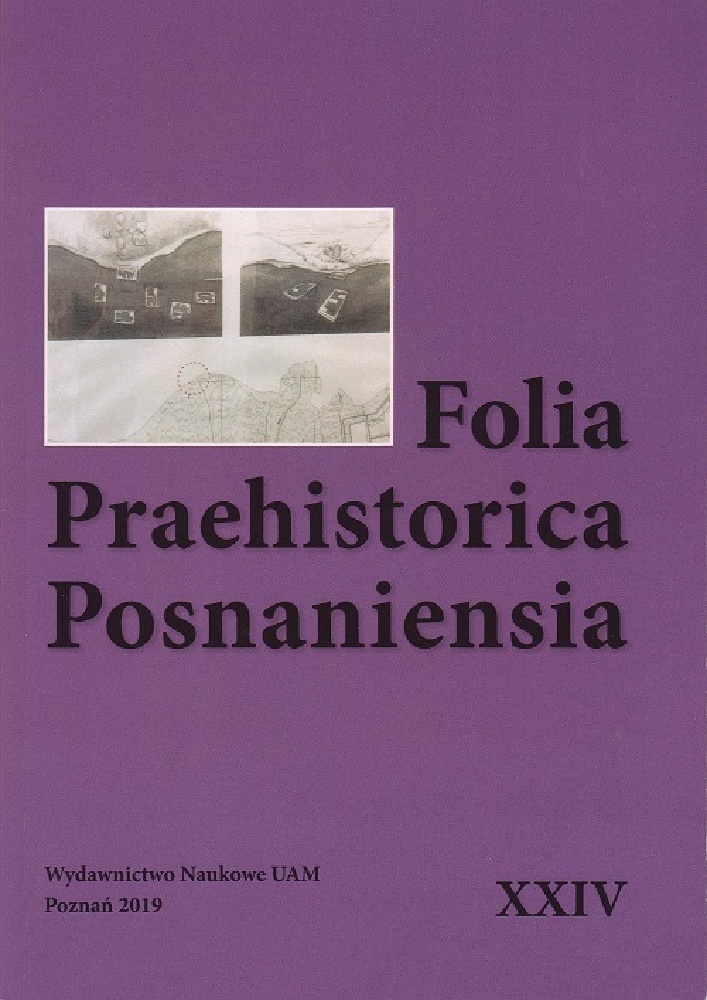Abstract
The issues of memory, heritage, and archaeology are strictly connected to the archaeology of the contemporary past and the Nazi period. That connection is a new field of research that lead to the reconceptualization of ideas of a museum, archives, and their relations to memory. In the paper authors discuss the case study of the area of former labor and concentration camp Plaszow in Krakow (1942–1945). Since 2016, numerous archeological research and education programs were conducted by the Museum of Krakow. The main purpose of documentation, surface surveys, and excavations was preservation of the architectural relicts and landscape, and supplementing the historical knowledge of authentic archaeological sources. The results of the research were related to the preparation of the boundaries for the future commemoration of the former camp’s area and its history as a museum and memorial site. The outcome of the archaeological activity is collection of artifacts, documentation and archaeological knowledge that influenced the idea of commemoration in its specific way. The article attempts to answer the questions about the categories of archives and museums.
References
Bauman, Z. 1990 Prawodawcy i tłumacze. Studia Filozoficzne, 4, 3–32.
Bednarek, M., Karski, K., Śmietana, M. 2017 Miejsce Pamięci KL Plaszow. Raport za okres 2016–2017. Kraków: Muzeum Historyczne Miasta Krakowa.
Burström, M. 2013 Fragments as something more: Archaeological experience and reflection. W: Alfredo González-Ruibal (red.), Reclaiming Archaeology: Beyond the Tropes of Modernity (s. 311–322). Oxon: Routledge.
Gonzáles Ruibal, A. 2008 Time to destroy. An archaeology of supermodernity. Current Anthropology, 49(2), 247–279.
Derrida, J. 1996 Archive fever: A Freudian Impression. Chicago: Chicago University Press.
Halbwachs, M. 1969 Społeczne ramy pamięci. Przekł. M. Król. Warszawa: PWN.
Karski, K., Różycki, S., Schwarz, A. 2017 Memories of Recent Past. Objectives and Results of Non-invasive Archaeological Research Project at KL Plaszow Memorial Site. Analecta Archaeologica Ressoviensis, 12, 221–246.
Kotarba, R. 2009 Niemiecki obóz w Płaszowie 1942–1945. Warszawa: Instytut Pamięci Narodowej, Komisja Ścigania Zbrodni Przeciwko Narodowi Polskiemu.
Le Goff, J. 2007 Historia i pamięć. Warszawa: Wydawnictwo Uniwersytetu Warszawskiego.
Minta-Tworzowska, D. 2015 O „użyteczności” rozważań nad miejscami i krajobrazami pamięci w archeologii. W: B. Gediga, A. Grossman, W. Piotrowski (red.), Miejsca pamięci. Pradzieje, średniowiecze i współczesność (s. 13–31). Biskupin – Wrocław: Muzeum Archeologiczne w Biskupinie, Komisja Archeologiczna Wrocławskiego Oddziału PAN.
Nieszczerzewska, M. 2011 Archiwum opuszczonych miejsc. Kultura współczesna, 4(70), 160–170.
Nora, P. 2009 Między pamięcią i historią. Les lieux de Mémoire. W: M. Ziółkowska, A. Leśniak (red.), Tytuł roboczy: archiwum No 2 (s. 4–12). Łódź: Muzeum Sztuki.
Orwid, M. 2009 Trauma. Kraków: Wydawnictwo Literackie.
Szpociński, A. 2010 Autentyczność przeszłości jako problem kultury współczesnej. W: A. Szpociński (red.), Wobec przeszłości. Pamięć i przeszłość jako elementy kultury współczesnej (s. 292–302), Warszawa: Instytut Adama Mickiewicza.
Pollack, M. 2014 Skażone krajobrazy. Sękowa: Wydawnictwo Czarne.
Pomian, K. 2006 Historia. Nauka wobec pamięci. Lublin: Wydawnictwo Uniwersytetu Marii Curie-Skłodowskiej.
Tokarska-Bakir, J. 2004 Rzeczy mgliste. Sejny: Pogranicze.
Theune, C. 2018 A shadow of war. Archaeological approaches to uncovering the darker side of conflict from 20th century. Leiden: Slidestone Press.
Zalewska, A. I. 2015 Archeologia czasów współczesnych. Tu i teraz. W: A. I. Zalewska, Archeologia współczesności (s. 21–39). Warszawa: Stowarzyszenie Naukowe Archeologów Polskich.
Żuk, L. 2015 Rzeczywistość pamięci (milieu de mémoire) społeczności pradziejowych. W: B. Gediga, A. Grossman, W. Piotrowski (red.), Miejsca pamięci. Pradzieje, średniowiecze i współczesność (s. 79–109). Biskupin – Wrocław: Muzeum Archeologiczne w Biskupinie, Komisja Archeologiczna Wrocławskiego Oddziału PAN.

